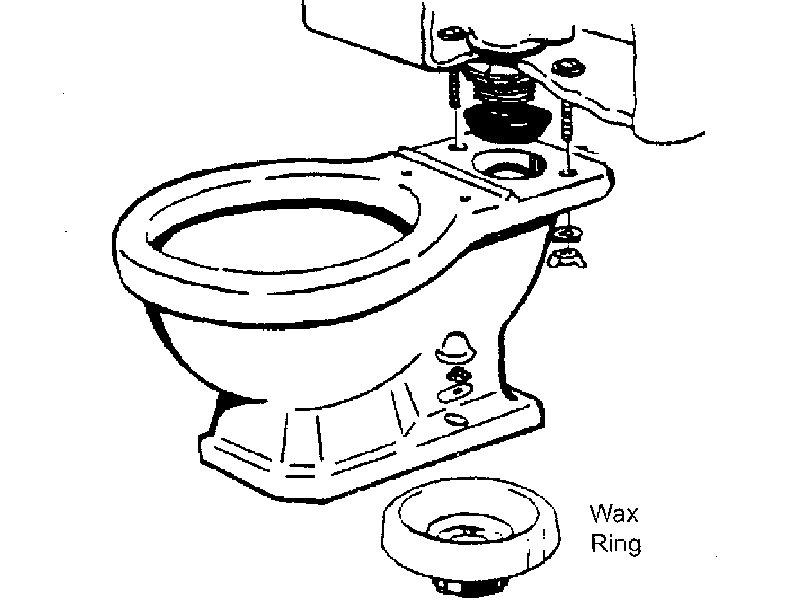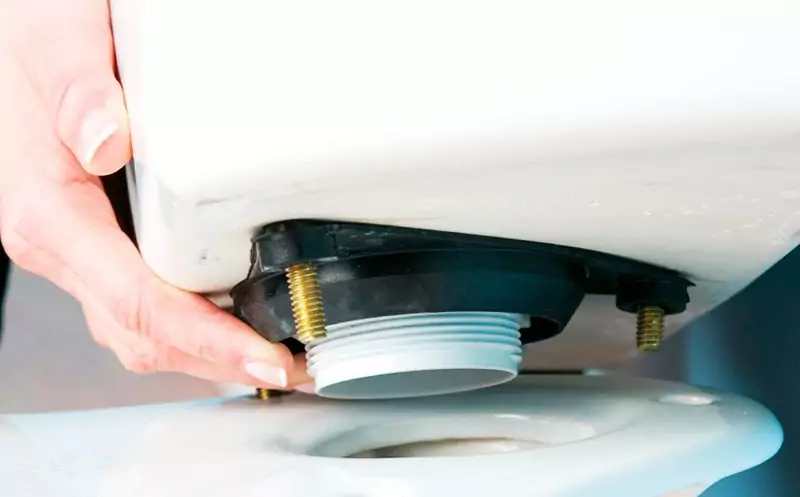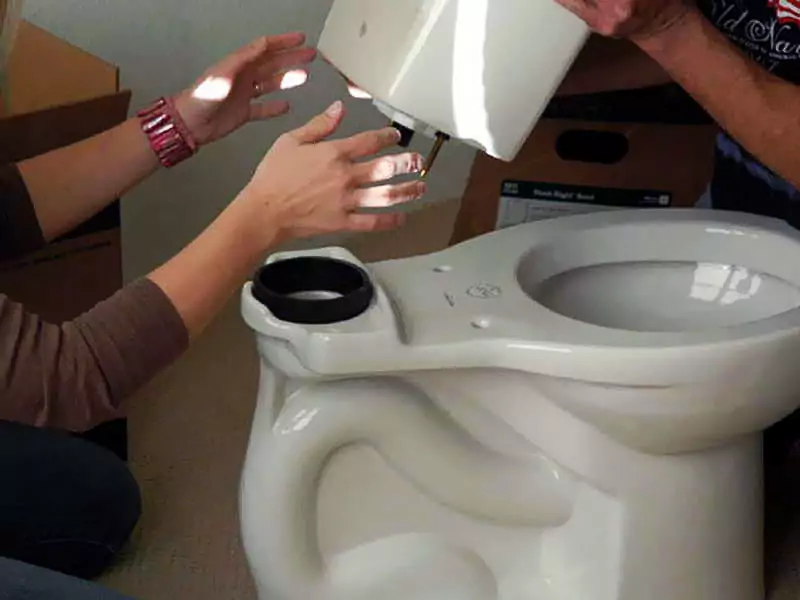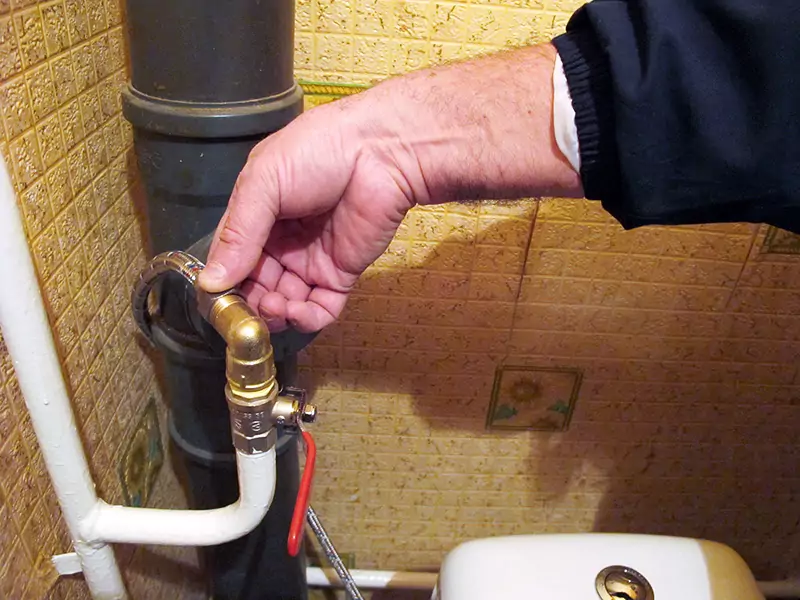Very often, after a move or renovation, a bathroom revision occurs. You study the quality and features of pipe wiring, the design, and the connection of plumbing. What to do if you suddenly notice a leak on the bathroom floor? Usually, the culprit is a failed gasket between the tank and the toilet. If you have time to solve the problem yourself, then be sure to turn off the water supply to the tank and, following the instructions in our review, fix the problem.
Functions of gaskets for household toilets
Usually the gasket between the tank and the toilet either bursts or moves. This is a simple but very important element of any plumbing fixture. It provides a tight seal when draining water. To ensure a reliable connection, you need to know what defects and installation features can lead to leakage. The gasket itself is necessary in any device, as it protects the sanitaryware from stress and cracks, and your bathroom from flooding.
Types of seals when connecting a bowl to a tank
To replace the seal, it is important to know which option is located in your tank. There are a lot of options for seals for plumbing fixtures. All of them can solve the problem, but the options primarily depend on the tank itself. They can be round, oval, trapezoidal, and universal. The latter costs a little more, but the chance that they will help you out in your particular case is much greater. It is recommended to always have these universal rubber bands in stock. The seal may move or wear out. It doesn’t matter what exactly caused the malfunction, we will study each type of them.
Round shape options
Round cistern gaskets are commonly used in almost all modern models. They are usually a standard size and can be purchased at a regular hardware store or hardware store. This type of seal is usually the easiest to install and the most affordable to purchase.

It happens that craftsmen use old models of seals that are made of ordinary foam rubber. They can help you out in an emergency, but after a couple of days, they can cause a leak. These cup liners are considered more of a first-aid solution than a real long-term solution. Sometimes simply replacing the cuff can solve the problem.
Oval Options
The oval shape of rubber seals is most often used in toilets dating back to the Soviet era. They are also easy to install and can cause no complaints. Except perhaps for the lack of such an option in the construction supermarket.
Trapezoidal shape options
Such gaskets are extremely inconvenient to replace. The form involves fixation from several sides at once, not only with bolts, but also with liquid glue. And all because they are quite capricious and can easily move from their place. They can be applied and fastened without additional fixation, only if you have a huge supply of patience and… glue. Typically, for such a gasket, the toilet design provides not 2 connecting screws, but 3 or 4. The mounting location is usually fixed with bolts. When installing such a gasket, additional fixation with bolts and sealant is required.
Universal gaskets
The most convenient type of seal available, which is suitable for any toilet model. It is considered an excellent “quick fix” solution. Most often, it is these fasteners that ensure maximum tightness of the structure.

When is replacement needed?
How to determine that a seal needs to be replaced? The easiest option is to check whether there is a leak or not. In addition, the mobility of the tank can also play a role. If you notice water under your feet in the toilet, then most likely the rubber band needs to be changed. In this case, it would not be superfluous to disassemble the structure, and remove the tank, having first turned off the cold water. If you are convinced that the gasket is leaking, it must be replaced. We’ll show you how to install the gasket in the video below.

How to determine by external signs whether the seal needs to be replaced? Usually everything is clear at the first inspection – shift, physical abrasion of the part leads to a wet floor. It’s good if you happen to be at home at this moment. And if not? After dismantling the tank, if there are no visible signs of aging, the cuff is felt. If it is too hard, it is replaced. Changing the connecting link is not difficult, you just need to have an idea of what types of gaskets there are, sometimes it fails after just a year.
The main condition for replacement is the appropriate size and shape. Each type of gasket has universal sizes; you just need to remember the markings or take a leaky elastic band with you. Usually, any store employee will be happy to help and find you the product you need.
How to choose a product
This is exactly what you should do if you need to quickly and accurately select a gasket. This makes it easier to choose the option that is ideal for your model. It is better to take your time with the choice and take gaskets made of dense rubber, in no case foam rubber. They will last you a few days. And most importantly, you will buy something that will last for many years.
Material and shape
It is best to choose models not made of plastic and dense foam rubber but of durable rubber. Modern manufacturers have learned to use various additives to increase the elasticity and strength of the material. Such gaskets for the tank are more wear-resistant and less capricious. There are no significant differences, but it is still better to choose elastic models with minimal shrinkage and no chemical odor.
Pay attention to the design and structure of the landing shelf. The shape and size of the gasket depend on its features. Please note that the diameter of the so-called seat is exactly equal to the diameter of your spacer disc or rubber band. There are bowl options with smooth landing shelves as if recessed into the base of the landing bowl.
How to replace the gasket
There are usually no difficulties with replacing rubber seals. The most important thing is to shut off the access of water to the drain tank, remove it, determine the problem, and proceed with replacement. If the rubber gasket is too old, it can leave marks even on sanitaryware. In this case, the tank should be degreased and washed with a cleaning agent to prevent leaks due to a loose fit. The process of installing the seal takes a few minutes.

Removing the cistern
Usually, this procedure is not difficult. Most often, the tank is mounted on special bolts or studs, which ensure its stability during maximum water intake. The studs have double-sided threads for fixing nuts. Most often, such bolts are attached to the rear of the drain tank.

Installation and fixation of the barrel
Installation and fixation of the tank takes place in a container freed from water. It is necessary to unscrew the fixing nuts from inside the tank and carefully remove the bolts and studs that secure the tank. Pay attention to the integrity of the fastening elements; in case of corrosion, it is better to replace the bolts. The cavities of the tank and toilet bowl are united by a common pipe, insulated at the junction with a rubber sealing ring.
Please note that some models of gaskets have special ears that must be threaded through the mounting bolts that secure the drain container. It is important to combine all the necessary elements and only then tighten the bolts.

Connecting internal fittings and hose
For those who are more or less versed in plumbing installation issues, the procedure for installing a tank cannot be complicated. You should follow a logical sequence and not use excessive force. After all, tile is a rather fragile material. It is necessary to pay attention to some features that greatly influence the final result.
Before carrying out work, turn off the water supply to the toilet drain. Empty the tank of water. If there is a separate plug for the water, this will not prevent anyone from using both hot and cold water. This option of shutting off the water simplifies the installation of plumbing and does not disturb everyone in the household, since it does not require a complete shutdown of water in the apartment.

Leak Testing
First of all, connect the water. Fill the tank and flush the water. Listen carefully to the sound of water. Inspect the connections for leaks. Sometimes condensation may occur in the bathroom due to high humidity. Turn on the water supply and check the device for leaks. After checking, you can turn on the water at full power.
Important! After replacing the rubber band, study how the toilet works within 2-3 days.
Check the quality of the bolts. They may need to be tightened in a day or two. Since, depending on the load, tank volume, and gasket material, it may sag slightly. The easiest way to check the joint is with toilet paper; if it doesn’t get wet, then everything is fine. It is important to calculate the pressure and load and install the gasket taking into account all the features of the device.
